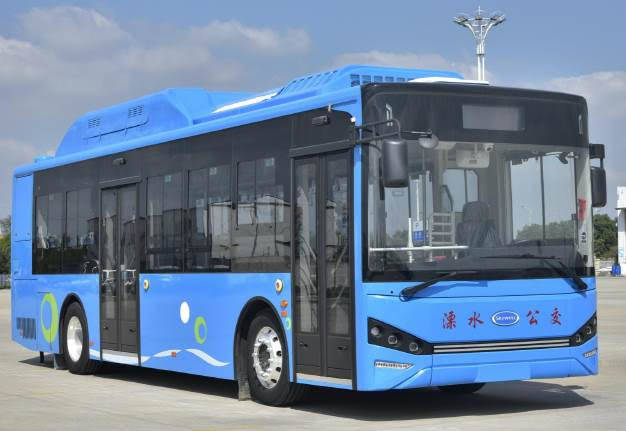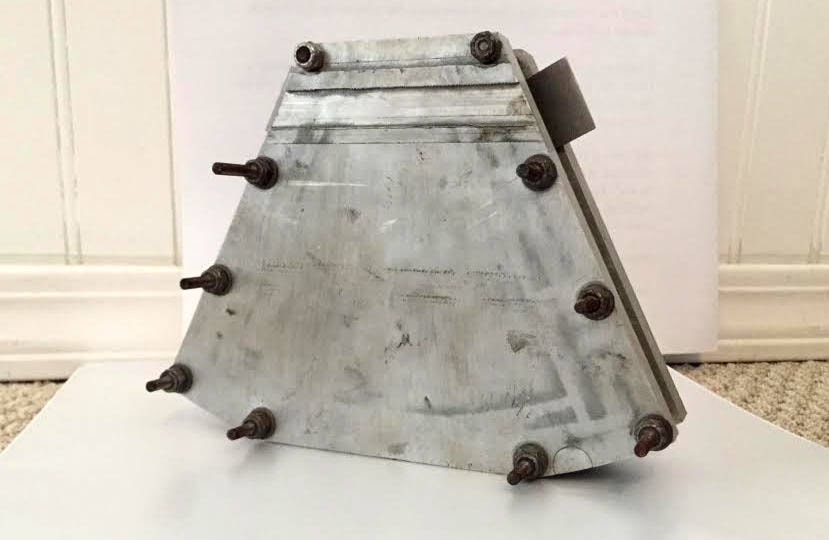A company that had humble beginnings in Chilliwack more than 20 years ago hit the big time last week when it went public on the Toronto Stock Exchange. Loop Energy, a pioneer in the world of hydrogen fuel cells, may one day soon be a billion dollar company.
Here’s part one in a three-part series, detailing the long journey from there to here.
———————————————-
It started with a man and a mountain that he could not see.
Twenty three years ago, Chilliwack born-and-raised David Leger looked toward the place where Mt. Cheam should be, and it wasn’t there.
It was still there, of course, because mountains tend to stay where they are, but it was hidden behind a thick layer of smog.
“How can you not see a mountain that’s 10 miles across and a mile-and-a-half tall?” he thought. “Something’s wrong, right?”
Ninety nine out of 100 people would quickly move on, confident that someone else was working on the smog and the ozone layer and all that stuff. But as Leger’s entrepreneurial mind mulled it over, he saw opportunity.
He was 28 years old then, young and idealistic. But he was also smart and logical, with a knack for ‘thinking outside of the box.’
Or cube, in this case.
| This is the prototype of Loop Energy's breakthrough fuel cell circa 2001. (Loop Energy photo) |
In the late 1990s and early 2000s, hydrogen fuel cells were becoming a thing. Long before Tesla brought battery-powered cars to the road, dreamers dreamed of electric vehicles powered by these fuel cells.
The problem was making them small enough and manufacturing them cheaply enough that they’d be accessible alternatives to gas and diesel powered engines.
So back to that cube.
Fuel cells being pioneered by companies like Ballard were that shape and while they were exciting, they were also un-optimized. They needed to be more efficient, more durable and cost less to compete with the internal combustion engine.
Almost all fuel cells have channels on each side of what is called a flow field plate. Many plates, often a hundred or more, are stacked in series to create a fuel cell stack. On each side of this plate is a pattern of channels, one side for flowing oxygen from the air and the other for hydrogen.
But no way to manipulate the flow inside of the fuel cell had been discovered. Every one of them had the same general design, and the same drawback. They weren’t powerful enough and struggled to maintain the power they had.
They were un-optimized.
| Loop Energy had humble beginnings in Chilliwack, but the company's 50kW fuel cell module will soon be used to power 300 municipal buses in city of Nanjing, China. (Loop Energy photo) |
Leger wasn’t an engineer, but as he studied the schematics and started to understand how fuel cells worked, he had an idea.
What if?
“What if instead of making a fuel cell in a cube, we squished it down and made it wider,” he mused. “Like a slice of pizza with the pointed end bitten off.”
It was simple geometry, really.
If the fuel cell plate was a trapezoid that tapered at one end, the flow of oxygen and hydrogen could be manipulated and the whole thing could, theoretically, be far more efficient.
RELATED: Clean energy one of Canada’s fastest growing industries
He thought he had something, but he didn’t know for sure until he met Tony Edgar. Edgar was an industrial technology advisor for the National Research Council’s (NRC) Industrial Research Assistance Program (IRAP). Friends of Leger’s who were also friends of Edgar’s suggested the two men get together, and when they did, Edgar was impressed.
“This is pretty cool,” he said.
Not long after, Leger and Shane Black hopped into an old propane-powered pickup and headed into the city. Two guys from Chilliwack, pulling into the parking lot in a truck with foam and springs sticking out of the seats, Leger figured they must have been quite a sight to the people at the NRC’s Institute for Fuel Cell Innovation.
But if anyone dismissed them at first, they were forced to re-evaluate after seeing Leger’s concept.
People who know worlds more about fuel cell technology told him that he had a couple attributes in his design that might be really important.
“Really?” Leger thought. “Tell us more!”
They drove home that day with an invite to return, and use the knowledge and resources of the NRC to make the design a reality.
All Leger had to do now was raise a few hundred thousand dollars.
———————————————-
Read part two of this three-part series here.
@ProgressSports
eric.welsh@theprogress.com
Like us on Facebook and follow us on Twitter.

